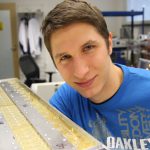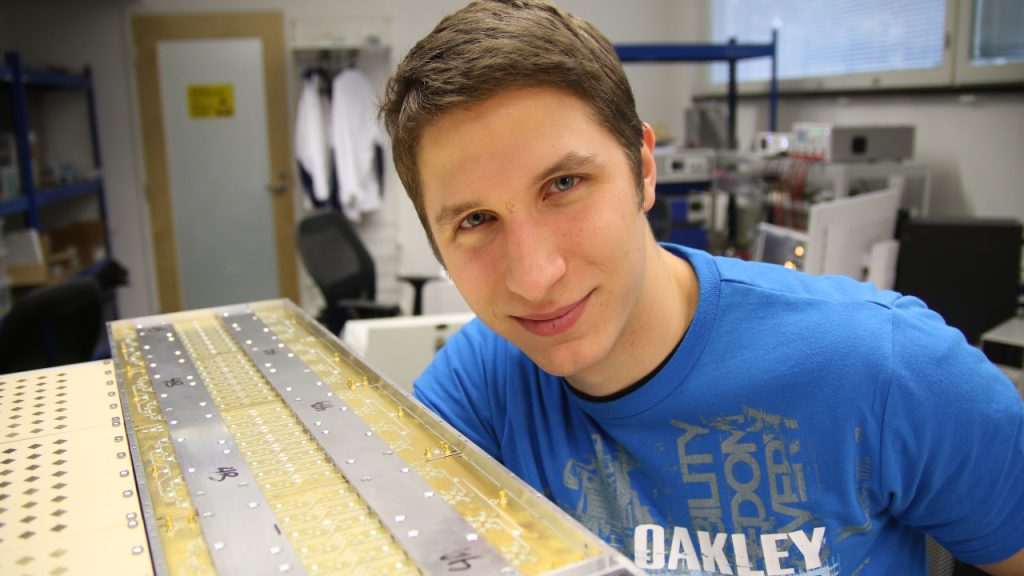A new era of space is unfolding through the interaction between government organisations, private sector, society and politics, what is referred to as “Space 4.0”. We are demanding increasing amounts of secure, easily and readily accessible data. Much of these data come from satellites that observe our planet, connecting with the fabric of society and the economy.
Spaceoneers spoke to Rafal Modrzewski, CEO and Co-Founder of Finnish space startup Iceye who are working to provide a constellation of earth observation satellites. They will provide data fast and reliably no matter what the weather or time of day.
Spaceoneers: Describe your value proposition.
Rafal Modrzewski: Iceye building a system that will allow us to capture Earth observation data very quickly and in a large amount for a reasonable price. We want to be able to provide our customers near-real time information anywhere, anytime, and always.
Firstly, this means that we are building a satellite-based system that allows us to collect data all around the globe. Secondly, we want to be able to revisit locations and respond very quickly, which means we need a constellation of multiple satellites. Finally, we want to be independent of weather conditions and daylight at a given imaging site, so we are equipping the system with active microwave instruments instead of cameras.
Parts of these capabilities already exist in the traditional governmental and defence Earth observation space but we think this type of capabilities should be accessible to larger commercial market. And the traditional governmental customers have discovered that they, too, can get the same capacity much more cost-effectively built by the new commercial space industry with a commercial target market.
That’s our goal and mission. We want to bring this new global, on-time information to the hands of our users in various industries to enable better decision-making, which will in turn provide commercial benefits, or even save lives.
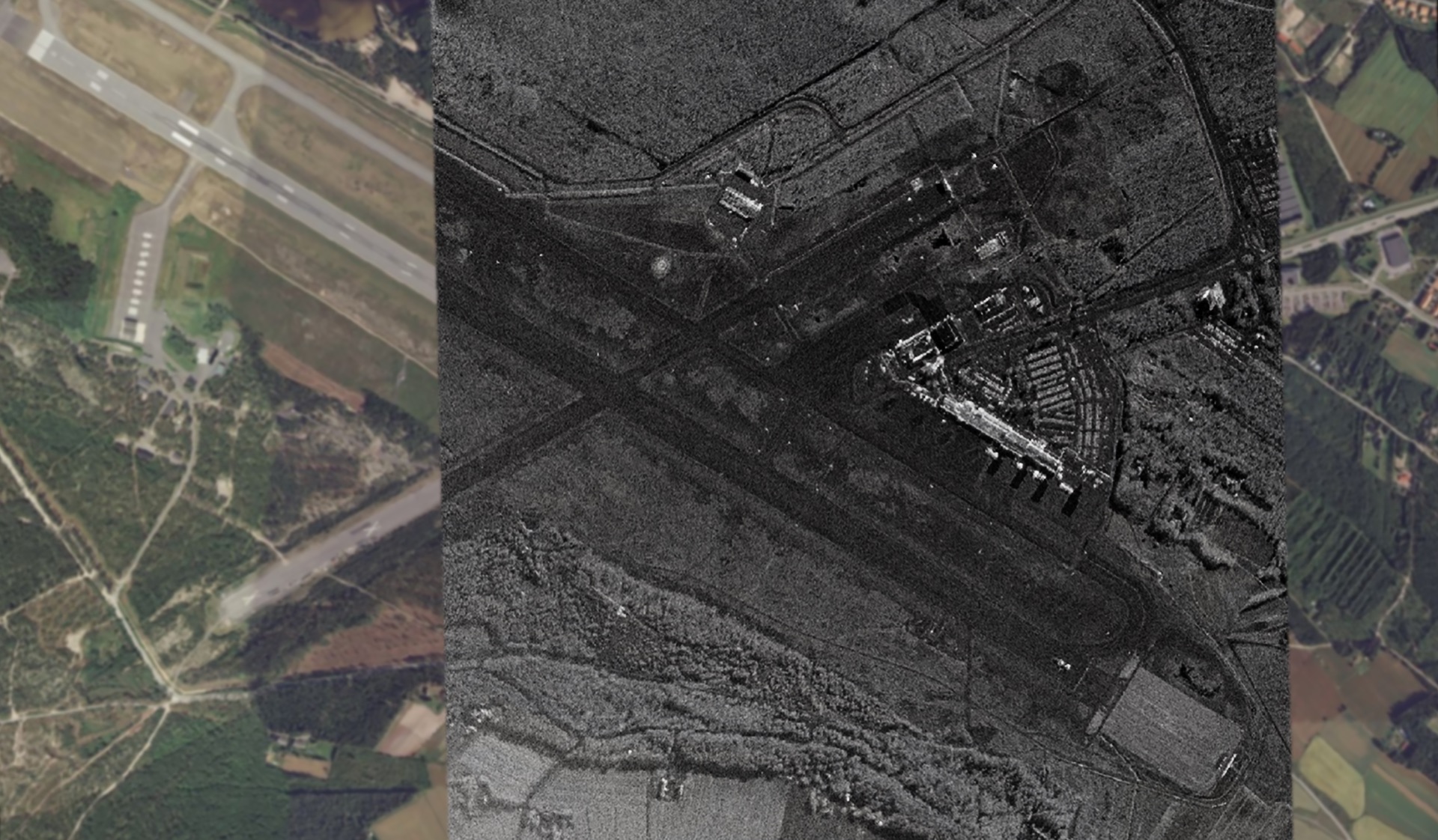
Spaceoneers: How did the idea for your business come about? How did you get started?
Rafal Modrzewski: We actually started as part of a venture formation course at Aalto University. We took a joint course between Aalto University Business School and Stanford University. The other founder and I were working on a small satellite project called ‘Aalto 1’ at the university where we learned how to approach building satellites in a new way.
We knew what satellites could do and we had seen how to build them with very limited resources. Then this course came forced us to think in a different manner and analyse the pros and cons of the smallsat approach from a business perspective.
We discovered there is definitely an advantage of smallsats, which is that they are so much cheaper that you can launch a large amount of them for a relatively small amount of money. Once you have done so you have a system that can be much faster in terms of response and revisit the constellations. We were able to identify unsatisfied needs in the field of time-sensitive data, such as the Arctic maritime sector that was eager to get frequent updates for tactical sea ice management for operations safety and efficiency. Most of the needs that were not already covered by the other planned smallsat constellations were relating to data reliability: clouds or darkness don’t stop the operations, so earth observation data would need to be available to support the operation regardless of conditions. This is why we decided to focus on microwave instruments, radar imaging specifically.
Spaceoneers: You are focusing on radar only?
Rafal Modrzewski: Yes. Radar instrument allows us to image in all conditions and customer can always get the information they need. Clearly small satellites shouldn’t try to compete with the resolution or quality of data, and we won’t be providing multiple frequencies or polarizations. Larger satellites, larger apertures and larger antennas will always produce better data but with multiple smaller satellites you can always reach the target area faster, or more often. We think that we’ve found a winning trade-off between the image product parameters and temporal resolution.
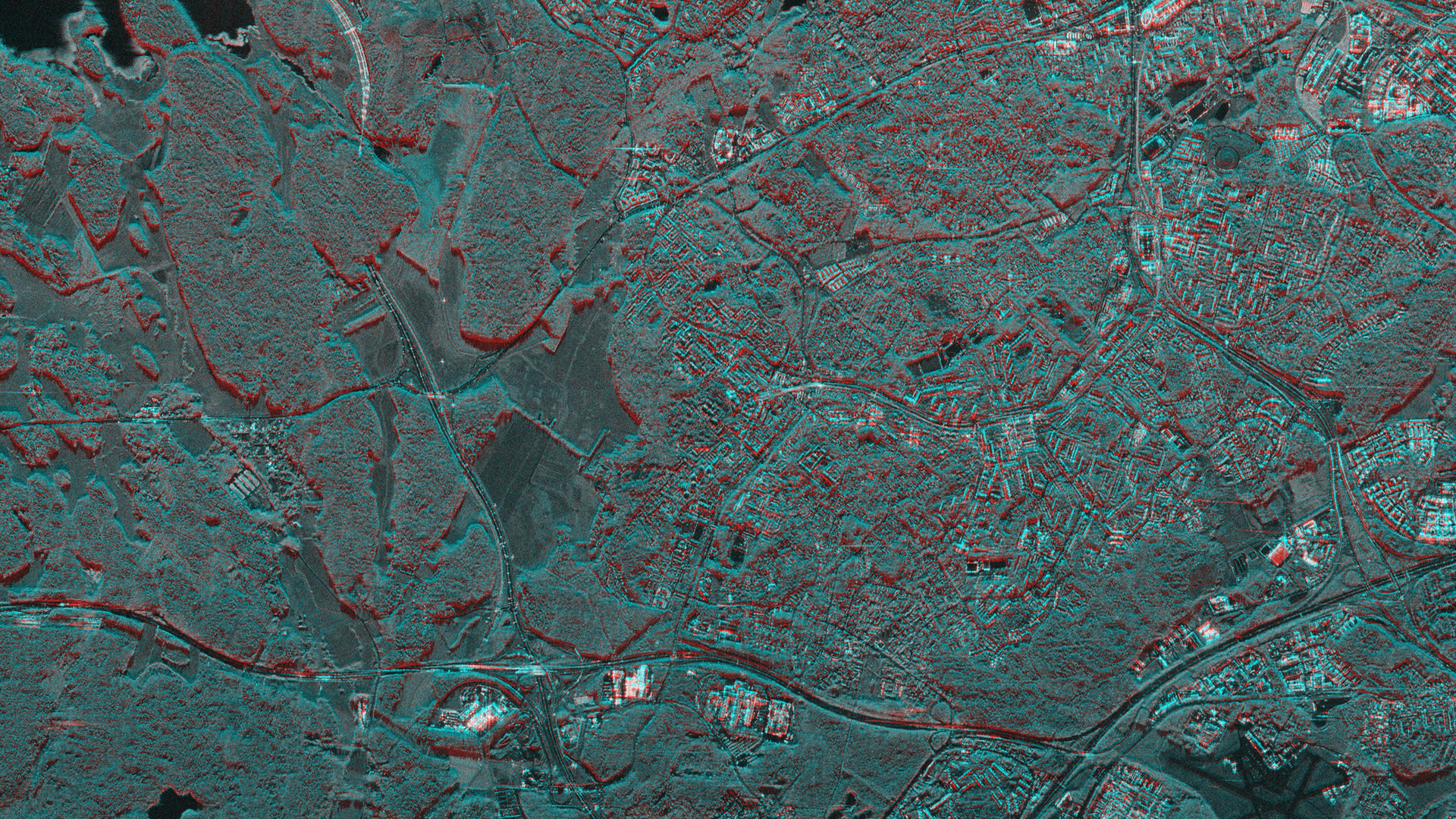
Spaceoneers: What were the biggest challenges to starting your business?
Rafal Modrzewski: The biggest challenge we had, as with any space business, is that even small satellites are very capital-intensive for a startup. You need a large amount of time and money before you’re able to launch. It is easier to find capital in the market when you first have several satellites flying – you can probably get customer commitment and loans against those commitments. But to find capital that allows you to launch your first satellite is something else. It is still expensive to launch satellites and it still costs millions of dollars. Someone has to give you these millions of dollars and trust that you can deliver.
I think the less money you can use to prove your minimum viable product (MVP), the better your chances for success are.
Spaceoneers: How did you get investors behind your idea?
Rafal Modrzewski: You have to have a sound business plan. Whenever an investor is investing there’s probably two or three things they are looking for. They will look at the vision, your team, business plan and execution. There has to be a possibility for investors to contribute to some large, new breakthrough.
For us, this is definitely a breakthrough. To move from what used to be a military-only technology and allowing this technology to be used by consumers around the globe is a breakthrough. We’ve seen this with the internet, telecoms, microwave ovens; anytime we take a technology that was mainly used for defence purposes, we lower the price barrier and let users take advantage of it, we see a major breakthrough. This is going to be a similar breakthrough, being able to gather earth observation data cheaply and offer these databases for users around the world so they can take advantage of it, we think we will see a major impact on the economy and the way many industries function nowadays.
Second, they will need to see a capable team. You’ll need to convince them that the people you’ve got are capable of building the technology that your solution requires.
The last but not least, of course, is that you will be able to eventually make revenue. You need to show understanding of your market: you need to be able to show concrete customer interest for individual reference, as well as having a set of educated guesses on the large trends.
I have to say the order is exactly that: vision, team and sound business plan.
Spaceoneers: Do you find now that since the regulations the ITU opened up the X-Band, this is a great opportunity for investors to get behind?
Rafal Modrzewski: These are extremely interesting times for synthetic aperture radar (SAR). Opening up the X-band allows things we haven’t seen before on a much larger scale. When I think about it, the opportunity for us isn’t straightforward. This helps our company but not by the fact we will be able to utilise this band. It means that existing companies are defocusing on what they are doing to capturing the full band.
We have already seen Airbus Defence and Space announcing the fact they will work one 1.2 GHz to provide a 25-cm resolution compared to a 1-metre resolution provided so far. This is fantastic but in order to capture such a resolution you need a satellite that costs half a billion dollars. These are not the type of satellites Iceye is focused on.
I don’t want to say it is impossible but it is definitely very, very difficult to provide 25-cm resolution with satellites that cost only single millions. It is a fantastic opening for the traditional industry for sure as they will be able to do much more with their large satellites. Most probably the combination of that with the speed that a constellation can offer will be able to offer much more to consumers around the world, which is exactly what we all want to do. Traditional space and new space care about growing the market, especially a market of value-added services moving away from government and defence use to more consumer and industrial use.
So, this opening of the frequency band will help in a way but more importantly it will help grow the market much faster and will make the guys currently focusing on high-resolution be even more focused on high-resolution. This will give a much larger need for speed and response as they are providing just the high-resolution.
Spaceoneers: You said you want to move away from government and defence to consumer industry but who is your main target audience?
Rafal Modrzewski: We want to move as the market grows. At first we will target the customers that are already using this data and understand how to use it for their benefit. This is currently mainly maritime, infrastructure, agriculture and various types of energy markets. Maritime market is first in line because the need there is very clearly not for resolution but for speed and response. And price.
In fact this is the market we started with. Our name ‘Iceye’ comes from the first use-case that we established pilot projects in, which was need for near-real time ice monitoring for offshore operations.
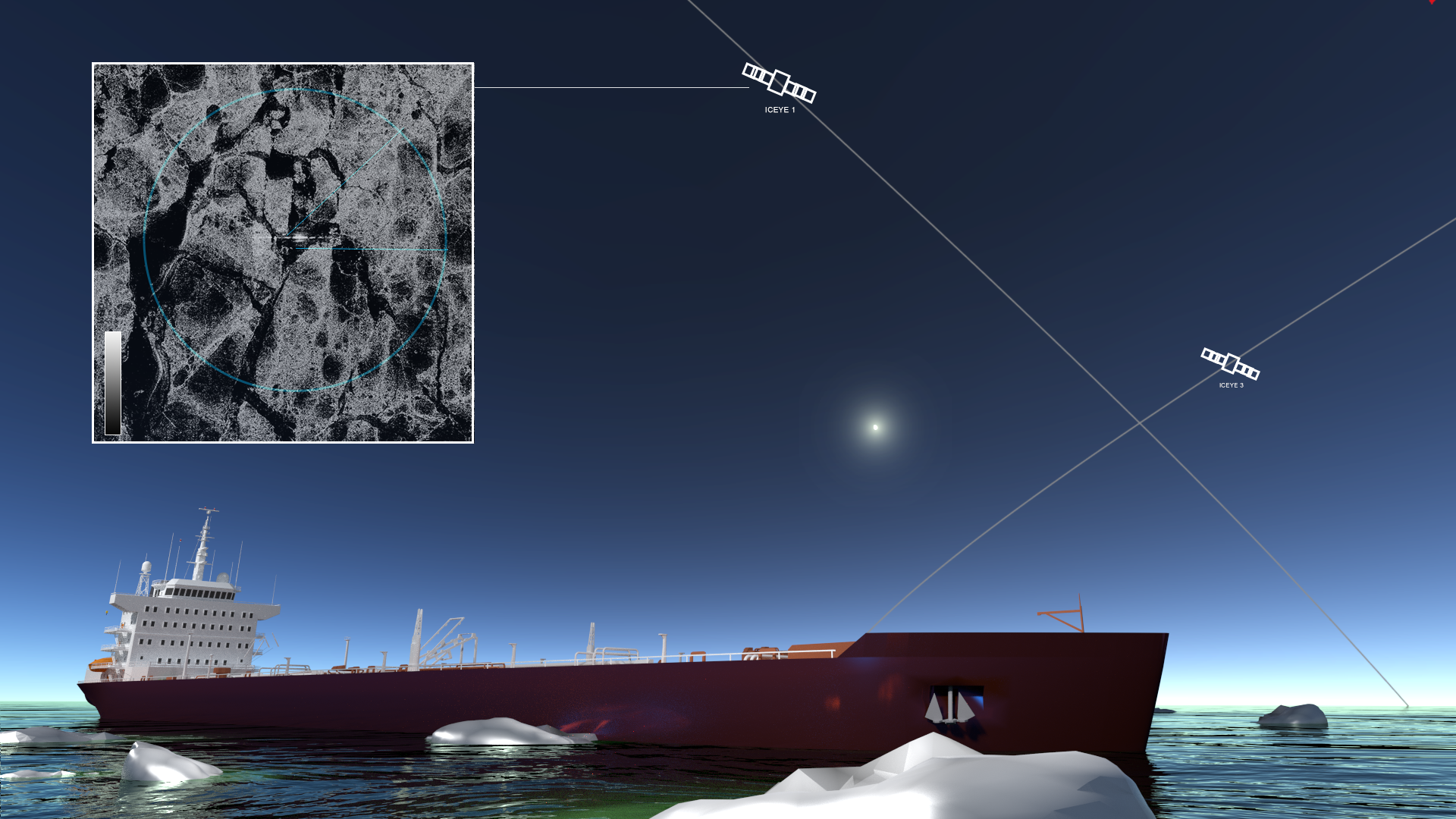
Spaceoneers: What are your influences such as people or companies you aspire to?
Rafal Modrzewski: I give credit to Will Marshall from Planet who has been extremely successful in democratising access to data and changing the way people see data, or to Dan Berkenstock and Julian Mann from Skybox Imaging (now Terrabella) who really brought new space into VC market showing a first full cycle from idea to financing to first successful launches to also finally an acquisition within just a handful of years. The new space industry might be new but there are already multiple entrepreneurs who have been extremely successful and are an inspiration to the next wave.
Spaceoneers: What important advice would you give to others who are interested in starting their own space startup?
Rafal Modrzewski: If you are about to start a space startup, do it because you love the vision and the technology behind it. Don’t do it because it’s supposedly going to bring a lot of money. It is an extreme amount of hard work and is much more difficult to raise money. It is much more difficult to succeed and the timeline to your success is far longer than with an Uber, Facebook and so on. It may take you years to launch your first satellite and even that is not guaranteed to be a success. Even your first constellation is not guaranteed a success. Unless the sole fact of building satellites is something that makes you happy, probably start with something else that does.
Spaceoneers: Would you say it is much more difficult to get investors on board for a space startup compared with, say, Uber or Facebook? How do you think it compares?
Rafal Modrzewski: It is much harder in general but the good thing is that nowadays there are investors that don’t just look on the return on investment but are actually keen on being part of something big, exciting and amazing in terms of a journey forward. This is something we can offer.
In terms of investment, our investment is more risky, more capital intensive, you have to invest a lot of capital early on and it’s a market that is still about to emerge. It is much more difficult an investment to make. It’s much more limited in terms of proxy companies for comparison, as there just haven’t been so many space startups yet. If an investor needs to establish a new way to evaluate a company and there aren’t too many cases beforehand that you can evaluate to measure if the company is growing or not, it is a much more difficult investment.
It is much more effort and takes more resources and cash to make this. As an outcome however you are the guy building the satellite and there are investors who are excited about that. I don’t think that when Steve Jurvetson was investing in SpaceX he was thinking about return on investment, they were thinking, “Yeah, we will build rockets! Rockets are cool and we’ll take people to Mars”.
How do we attract investors? We show them the satellite in the lab and they get extremely excited. They are excited to see many young engineers in the office, working hard everyday and building things that are amazing. Many investors are really kids deep down. They want to build exciting stuff. They want to build toys; they want to build startups that are ground-breaking. We are definitely offering them that, we show them what we’ve got, be honest that we are aware of the increased risk but we think this is a fantastic journey we can embark on together. It’s obviously up to them if they want to do that or not, but I have to say, there are definitely many investors who are interested in space and the number is growing.
Spaceoneers: What makes you a spaceoneer?
Rafal Modrzewski: I think the fact we’re about to become the first small company to launch a satellite with synthetic aperture radar (SAR) for only single millions in cost per unit is definitely a very pioneering type of activity. I guess what makes someone a ‘spaceoneer’ is that they can move forward with their concept regardless of people telling them it will never happen. When we started this there were so many people who said it would be impossible to build such a satellite of this size and cost that it looked like it was time to quit. The difference between a pioneer and a non-pioneer is that the pioneer doesn’t quit and still believes, moves forward, and if everything goes right, is ultimately rewarded for that.
Follow Iceye on Twitter @iceyefi
